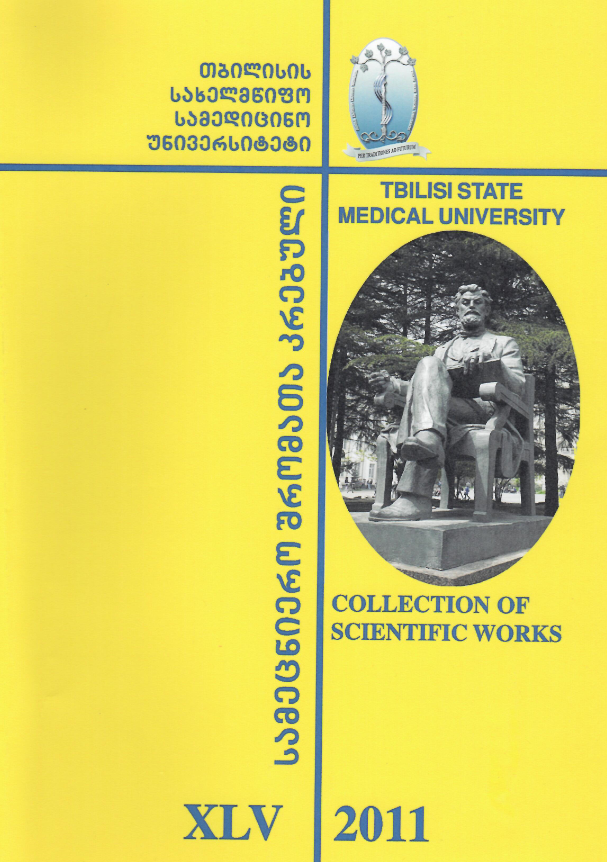Abstract
It is worthy to note that in 2011 100 hospitalized patients with hemorrhagic colitis underwent observation at the Center of Infectious Diseases, Aids and Clinical Immunology Practical-Research Center. The aim of our research was identification of STEC-strains rate in the structure of hemorrhagic colitis and revealing of clinical features of those cases complicated by HUS. STEC-infection was confirmed by the bacteriological, molecular biological and serological investigations (PCR an ImmunoCard STAT methods) (NCDC) in case of 50 patients. The laboratory results indicate that shiga-toxin producing Ecoli is circulating in Georgia There are not only 0157 but non-0157 strains as well (26, 0111, 0103 and etc.) After revealing of the shiga-toxin molecular markers in the stool by the use of the new and modern laboratory researches.
(PCR and ImmunoCard STAT) the rate of confirmation of the STEC infection has significantly increased in comparison with the bacteriological researches (41% vs 19%). STEC infection was characterized by the severe course of Clinical manifestation comparatively to the hemorrhagic colitis. Complications developed in case of 32 % of patients, out of which HUS was revealed more frequently in women with the history of premorbid background (26%). 5 patients required dialysis. Every patient was cured by complex etiological-pathogenical therapy and there were no cases with lethality.
References
World Health Organization. available at. http://WWW.who.int/mediacentre/factsheets/fs330/en/index.html
თ. მეგრელიშვილი პირობით პათოგენური ენტერობაქტერიებით გამოწვეული ნაწლავთა მწვავე ინფექციების კლინიკური თავისებურებები მოზრდილებში ავტორეფერატი 1992. გვ.-10-22
Tarr PI, Gordon CA, Chandlre WL. Shiga- toxin- producing Escherichia coli and haemolytic uraemic syndrome. Lancet 2008, 365:1087-1110.
Johanna Takkinen Europian Center for Disease Pre vention and Control. STEC 0104:H4 , activities at EU level. Eu, RL, for Ecoli , Rome, 4 November 2011.
Bennet W.J. Tarr P. Enteric Infections and Diagnos- tic testing. 2009; 25: 1-7




